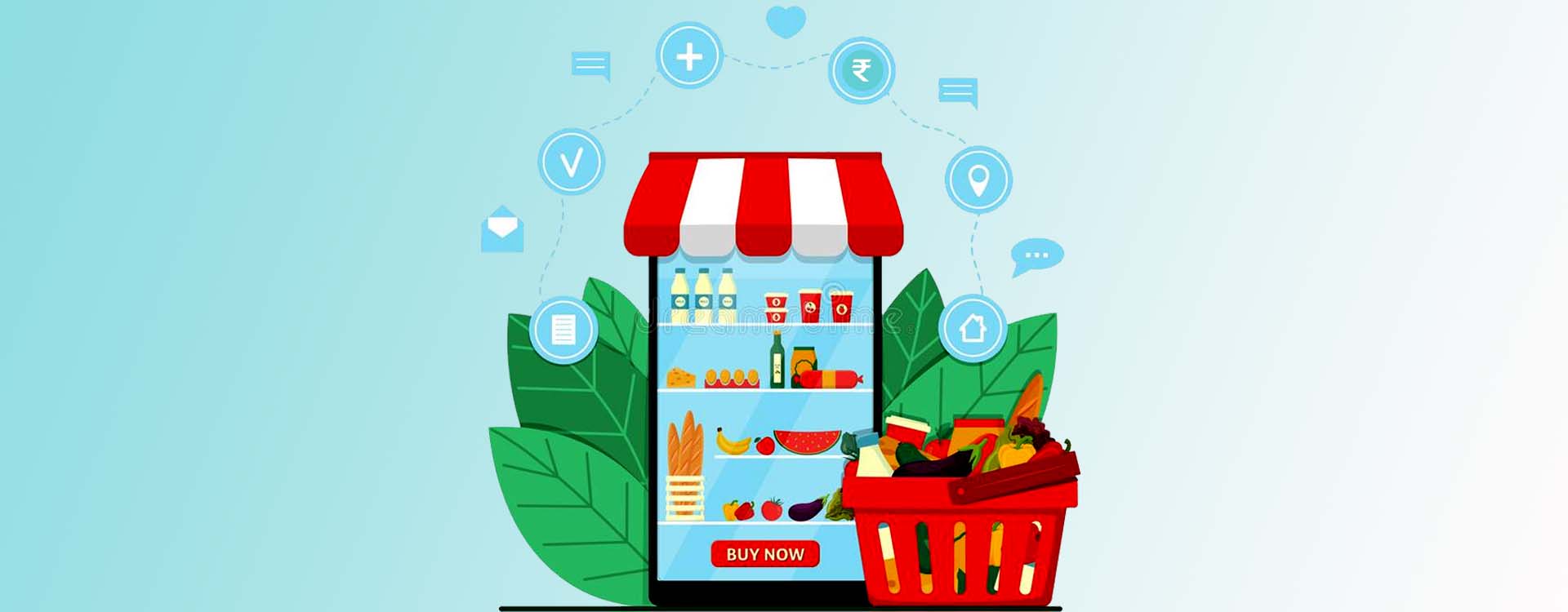Online grocery is witnessing a spike in demand since consumers continue to seek convenient shopping channels for buying the daily essentials and grocery being top in the list. Delivery of groceries online is undoubtedly the next big thing, with a market size estimated to grow eight times by 2026. Adding more edge to the numbers is the home-grown consulting firm RedSeer stating that the online grocery is currently growing at 41-49 percent and is likely to stay the same till the end of 2021, heading to become a market worth $850 Million by 2025.
Key Drivers
The pandemic has caused a paradigm shift in consumer preference and buying behaviour.
- Virtual working model has blurred the lines between professional and personal life, creating a never-ending schedule. An exhausted individual in the virtual workforce would like to purchase more easy-to-cook foods within the comfort of home delivery which offers hassle-free shopping.
- Consumers are now emphasising on boosting immunity and fitness and therefore are showing a preference for healthy nutritional food and health drinks.
- Working out and daily exercise has now become a regular activity, with focus on home gyms and exercise equipment, protein powder and shakes of global brands are on demand; these being available on E-grocery stores.
- Health being the prime importance and top priority there is an increase in willingness to pay for premium and superior quality nutrients and healthy food.
- Less or no option for offline buying and hence the consumer is made to look at digital channels.
‘‘
As per RedSeer the online grocery is currently growing at 41-49 percent and is likely to stay the same till the end of 2021, heading to become a market worth $850 Million by 2025.
E-commerce start-ups tapping into online grocery
India’s online grocery market turned out to be the next battleground with Flipkart, Reliance JioMart, Amazon, Paytm Mall, Shopclues, Snapdeal and Swiggy rushing to enter the space. This led to a sharp spurt in business in recent months not only in the metros but in Tier 2 cities and beyond leaving brands like BigBasket and Grofers no longer as front runners. The lucrative untapped opportunity of the massive Egrocery market prompted Meesho, the recently crowned unicorn to pump in $300 million into Egrocery. In the next 18 months Meesho will focus on enabling small-time grocers belonging to tier 2 and 3 cities to shift business online and break the notion of online grocery largely being a tier-I city phenomenon.
Market trends which are here to stay
The online grocery market is not only a lucrative one, but a floating one too. The demand for ordering groceries online was so sharp during the first phase of the pandemic that even large firms like BigBasket struggled to keep pace, given the supply chain challenges due to the restrictions. With demand exceeding supply, the real estate start-up, No Broker wants to tap into the e-grocery market in order to stay afloat in the business and survive the times of dwindling revenues. Most of these start-ups that earlier had not presence in the e-grocery verticals have partnered with kirana stores, local modern retail outlets and farm to fork start-ups like NinjaCart, Gully Network, Jumbotail, and supermarket chains like Spencer’s Retail, Vishal MegaMart, More, Metro Cash & Carry, and FMCG companies like ITC, to fulfill orders.
Convenience and apprehension of getting contacted by the virus are two behaviours exhibited by the consumers that are tailwinds to the online grocery’s exponential growth. This growth will sky rocket further with grocery being the category where most marketplaces’ investments will be made in the next five years. This thereby gives strong indication that staying in sync with time – traditional grocers should transform themselves into the online channel by partnering with e-grocery businesses and offering an omnichannel experience of buying essentials to the customers.





Properly researched and well written.